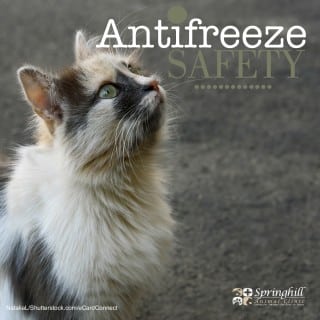After a long winter, it’s finally time for spring in Pennsylvania. While most people gladly welcome the warmer weather, pet parents need to increase their flea and tick prevention efforts. These parasites become much more prevalent as the temperature rises. It’s also important to recognize the symptoms of flea and tick infestation so you can promptly treat it.
Fleas 101
Fleas are wingless insects with a lifespan ranging from 14 days to one year. Although tiny in size and not always visible to the human eyes, fleas can jump as high as two feet. They can’t survive and reproduce without a living host. The following symptoms are common indications of fleas or ticks in dogs and cats:
Fleas 101
Fleas are wingless insects with a lifespan ranging from 14 days to one year. Although tiny in size and not always visible to the human eyes, fleas can jump as high as two feet. They can’t survive and reproduce without a living host. The following symptoms are common indications of fleas or ticks in dogs and cats:
- Droppings that resemble grains of sand or tiny white eggs on the fur
- Excessive biting, licking, or scratching
- Fur loss
- Gums appear pale
- Tapeworm
- Scabs and hot spots
- Allergies
Besides attaching to your pet’s fur, fleas can enter your home on the clothes, shoes, or body of people. Once inside, they seek bedding, carpet, and furniture because these places are warm enough to allow them to burrow. After successfully finding an animal host, fleas continually reproduce throughout their short lifespan. These parasites can consume up to 15 times their weight in blood, which puts your pet at risk for anemia. Some dogs and cats also develop dermatitis due to an allergy to flea saliva.
What You Need to Know About Ticks
You’re most likely to spot these blood-sucking parasites on your pet’s head, neck, ears, and feet. Ticks live in tall brush and grass, making it easy to jump onto your pet’s body. Unfortunately, indoors pets aren’t immune from ticks since they can get into the house from another pet or a person.
Dogs and cats typically don’t show obvious signs of a tick bite. To make matters worse, you often can’t see them until they have become engorged with your pet’s blood. In the meantime, they can transmit diseases such as tick paralysis, Lyme disease, and Rocky Mountain spotted fever. If your pet goes outside, we recommend running your hands the entire length of his body every night. Be sure to check the underside for ticks as well.
Preventing Fleas and Ticks
You can reduce the flea and tick population in your yard by mowing the lawn frequently and picking up rake clippings and other yard waste. Using a flea comb and doing a tick check daily is the best way to ensure that these parasites don’t have a chance to do serious damage. We also recommend washing your pet’s bedding and toys in hot water weekly.
Dr. Soles is happy to recommend the most effective flea and tick prevention products based on your pet’s species and lifestyle. Keep in mind that we also offer a range of flea and tick products in our online store.
You’re most likely to spot these blood-sucking parasites on your pet’s head, neck, ears, and feet. Ticks live in tall brush and grass, making it easy to jump onto your pet’s body. Unfortunately, indoors pets aren’t immune from ticks since they can get into the house from another pet or a person.
Dogs and cats typically don’t show obvious signs of a tick bite. To make matters worse, you often can’t see them until they have become engorged with your pet’s blood. In the meantime, they can transmit diseases such as tick paralysis, Lyme disease, and Rocky Mountain spotted fever. If your pet goes outside, we recommend running your hands the entire length of his body every night. Be sure to check the underside for ticks as well.
Preventing Fleas and Ticks
You can reduce the flea and tick population in your yard by mowing the lawn frequently and picking up rake clippings and other yard waste. Using a flea comb and doing a tick check daily is the best way to ensure that these parasites don’t have a chance to do serious damage. We also recommend washing your pet’s bedding and toys in hot water weekly.
Dr. Soles is happy to recommend the most effective flea and tick prevention products based on your pet’s species and lifestyle. Keep in mind that we also offer a range of flea and tick products in our online store.



